Wild edible plants can save our lives, especially during emergencies. Imagine being stranded on a deserted island or a wild forest without enough food. One can die in a few days only without anything to eat.
Luckily, we can find wild edible plants if we only know what they look like. Mother nature has given us weeds and flowering plants that look good and taste palatable.
Thus, we will introduce some wild edible plants in this article. Some of these can be found near you.
Also, there are popular plants in this list, but you have yet to get something edible until you read this article.
Now, let's introduce them all:
Wild Edible Plants to Be Familiar With
Alfalfa
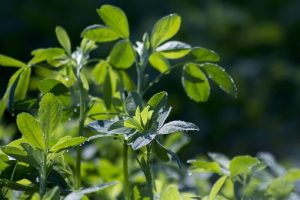
The Alfalfa is a flowering plant that belongs to the family of the pea. In traditional medicine, this one has been used as an alternative in treating drug and alcohol dependency.
This plant has deep roots, and it can grow tall. The shoots and the leaves are among its edible parts.
Also, these are the only things that can be eaten raw in Alfalfa.
Bamboo
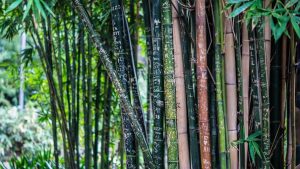
The bamboos are other wild edible plants available in the United States and other parts of the world. Indeed, bamboo contains fiber, which is good for the body. It also contains potassium and protein.
When it is still very young and measures around afoot, cut the shoots. You cannot eat raw bamboo. Peel its outer leaves first and remove any tricky parts of the bamboo.
Next, cut the plant into measurements of around 1/8". Please put it in a pot without a cover. Let it boil for about 20 minutes. You can eat it alone or with other greens gathered in the place.
Berries
Wild berries grow in northern North America, and many people love them. The wild blackberries and blueberries usually live in high and cold climates.
The majority of the berries having a dark color can be eaten safely in the wilderness. Also, it is loaded with fiber and Vitamin C, although these are low in caloric value. These nutrients are helpful whenever one is depleting the food supply for survival.
Avoid red and yellow berries because they can be dangerous for the body. You can pick the smaller leaves if the birds have eaten all the berries (or grapes). Then, dry it for a couple of days. Boil it for about 20 minutes and drink the concoction.
Broadleaf Plantain
The Broadleaf belongs to the Plantain family. It is rich in Vitamins K, C, and A. It has distinguishing green and oval-shaped leaves that meet at a base. Indeed, the leaves can be eaten raw. However, one must eat it while it's tender and young.
Bull Thistle
The Bull Thistles have thorny and firm stems. Meanwhile, its leaves have sharp and extended thorns. Some people hesitate to touch it and are amazed that one can eat it in the wild.
Cattails
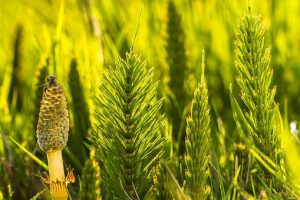
The cattail is one of the wild edible plants. Our Native American brothers consider this a staple. Indeed, this one is an excellent source of starch, which can fill the hunger.
The white-colored bottoms of the stalks and the tips are edible. Amazingly, it tastes tolerable, too. However, be sure not to eat the fiber because it can cause stomach problems.
Chicory
Many people wouldn't believe that Chicories are wild edible plants. This one belongs to the family of Dandelions. It is a bushy plant that contains bright blue flowers. People can eat the leaves and flowers of Chicory raw. However, the roots must be boiled before eating.
Chickweed
The Chickweed is also known as the 'Stellaria media.' Apart from being used as a food, this is also best as a cooling herbal remedy. One can quickly identify the Chickweed with its fine hairs, which can only be found on one side of the stem in one band. The sepals also contain some fine hairs. Chickweed is an excellent option for salad, even during survival situations in the forest.
Clover
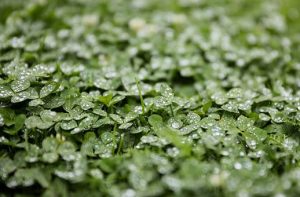
Clover belongs to one of the famous wild edible plants. It is rich in protein, and you can find it anywhere in the United States.
Anyone can eat it raw. However, those who have sensitive digestion might experience side effects.
Beware as well with the white clovers because this can be dangerous. It is best to boil it, put it in tea, or turn it into juice. Clover can make one live longer. But avoid eating the four-leaf ones since they can be poisonous.
Curly Dock
The Curly Dock is also known as the Rumex Crispus. If one is in a tight spot with no other food supply, then the Curly Dock is the best snack selection. The leaves of the plant are tasty, and it looks good too!
Furthermore, the Curly Dock is packed with Vitamins A and B. It may taste good and tempting. However, one must take it moderately since it can sometimes cause urinary tract infections. This is especially true for those who have sensitive digestion.
Dandelions

Many people are familiar with a lawn weed named Dandelion. However, only a few know that one can eat this plant from top to bottom. Just pull the yellow flower from the plant and enjoy its sweet flavor.
Moreover, survivalists can feast on their leaves and roots. Please put it in the pot, boil it, and taste the goodness. It is best if the leaves are young since it tastes better. Old leaves can taste off for those with delicate taste buds.
Pluck the Dandelions, and survival is possible if one is on the field. Indeed, nothing will go wrong with this bit of weed.
Daylily
Daylilies are part of the colorful culture and history of China. Traditionally, this flower has been used as medicine and food. If the daylily is still young, you can cut it at 5 inches. Sautee or stir fry it, and it can satisfy hunger pangs.
In cutting the daylilies, make sure not to damage the flower stalks. It can be cut again whenever the buds and flowers bloom.
Moreover, survivalists can eat the roots of the daylily. It is full of nutrition, especially after packing vitamins during the summer season.
Evening Primrose
The Evening Primrose is a popular herbaceous forb. Unlike other plants, it only flowers in the middle of the day and up to late at night. The plant can grow from 30 to 150 cm.
Also, it has a bright yellow flower with a nerve-tingling citrusy aroma. The young shoots of the Evening Primrose can be eaten raw. Furthermore, devour the flowers as they are and feel the feast of flavors in your mouth.
Fireweed
The Fireweed, or the Chamerion angustifolium, is a plant native to the Northern Hemisphere. People also call this rosebay willowherb in Britain.
Meanwhile, it is called the Great Willowherb in some parts of Canada. One can quickly identify the Fireweed with its straight and smooth reddish stem.
In addition, the leaves are unique. It has a unique vein pattern, which is circular. Unlike other plants, it does not continue at the end of the leaf.
Forget Me Not
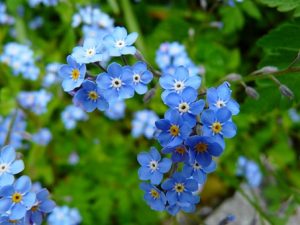
The Forget Me Not is scientifically known as the Myosotis. It is a tiny plant with beautiful blue flowers. This apple is not just a head-turner but also an edible snack. The Forget Me Not is expected to be during the spring season.
Garlic Mustard
Garlic Mustard can be disgusting since it emits a foul odor. However, this plant can save the life of a loved one during emergencies. Indeed, this plant is expected from May to June only. Its leaves have a broad and kidney-shaped design.
Also, the flowers are small and slender and contain some seeds. In North America, it is known to be an invasive species, and it can be found almost anywhere.
Milk Thistle

Milk thistle grows abundantly across North America. You can boil or bake its roots. Somehow, it satisfies people with its taste. It is a plant with a purple flower on the top. Commuters can usually see it along the highways. Meanwhile, one can remove its spine from the leaves. Then, the leaves can be eaten together with other parts.
Purslane
Many people know this type of weed by looks but can't pronounce the name correctly. One can find it close to the ground and in shady locations.
Somehow, it is similar to a tiny jade plant. Children can identify it in cracks on the sidewalk as they go home from school.
Another fact: whenever you see its seeds in the soil, they will be viable for over 30 years. Amazingly, this weed contains beta-carotene and Omega-3 fatty acids.
Nowadays, this little creature is making its way into fancy restaurants. However, the Purslane can be eaten raw or cooked with other greens in the wild.
Wild Asparagus
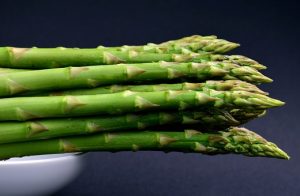
In North America, one can easily find wild edible asparagus. You can find the young stalks near the tall and old dead stalks. One can quickly identify it with its fleshy green spears.
Also, it has a thinner stem than those in the supermarkets. Survivors can steam, boil, or eat it raw when stranded in an unknown place with wild asparagus. Indeed, this plant is luscious and palatable. If it is around 6 to 8 inches, then it is already to harvest. Survivalists can take it raw or boiled.
Moreover, this one contains potassium and Vitamin C. Unlike other plants, the wild asparagus is not a fan of moist soil.
Usually, you can find it in places like railroad tracks and ditch banks. In areas with long summers, the wild asparagus dominates the land!
Meanwhile, the stalks of the wild asparagus are thinner than those in the supermarket. Cutting a stem near the ground will allow a new stem to grow again.
Violets
The violets are flowers that one can eat and share. This one is rich in vitamin C and vitamin A. Raw or boiled. Indeed, the violets taste good, like summer paradise. People also use it as tea and take it as medicine. If one has a headache, soak a towel in warm water with violets, the pain will subside.
Wild Onions
Wild onions can grow in damp places. This is true when one is stranded in the forest. Wild onions can be found on the forest floor. Anyone can eat all parts of the wild onions from bottom to top. Have it raw, boiled, or together with other green edible leaves in the field.
Wood Sorrel
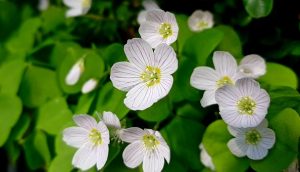
The wood sorrel is a plant that can effectively quench thirst. On the same note, this is a delicious snack alternative, especially in the forests. It has various colors, which are green and yellow.
Meanwhile, the leaves are filled with Vitamin C, which is good for fighting infections. Many people liken the wood sorrel to lemons. It has a slightly sour flavor bursts in the mouth with every bite.
Conclusion
In sum, always be careful in finding what to eat, especially in the wild. Indeed, there are wild edible plants around the area. However, investigate its properties before devouring it.
One recommendation is to eat a small portion of a plant and wait a few hours to see how the body reacts. If possible, cook the wild edible plants to be safe. Beware of the plants close to roads or cities. This might be already contaminated with dangerous chemicals.
Finally, do not eat plants that, at first glance, look dangerous. Trust your instinct and never take the risk of eating unknown plants. Familiarize yourself with the lists above to equip yourself as you travel in the wild.















